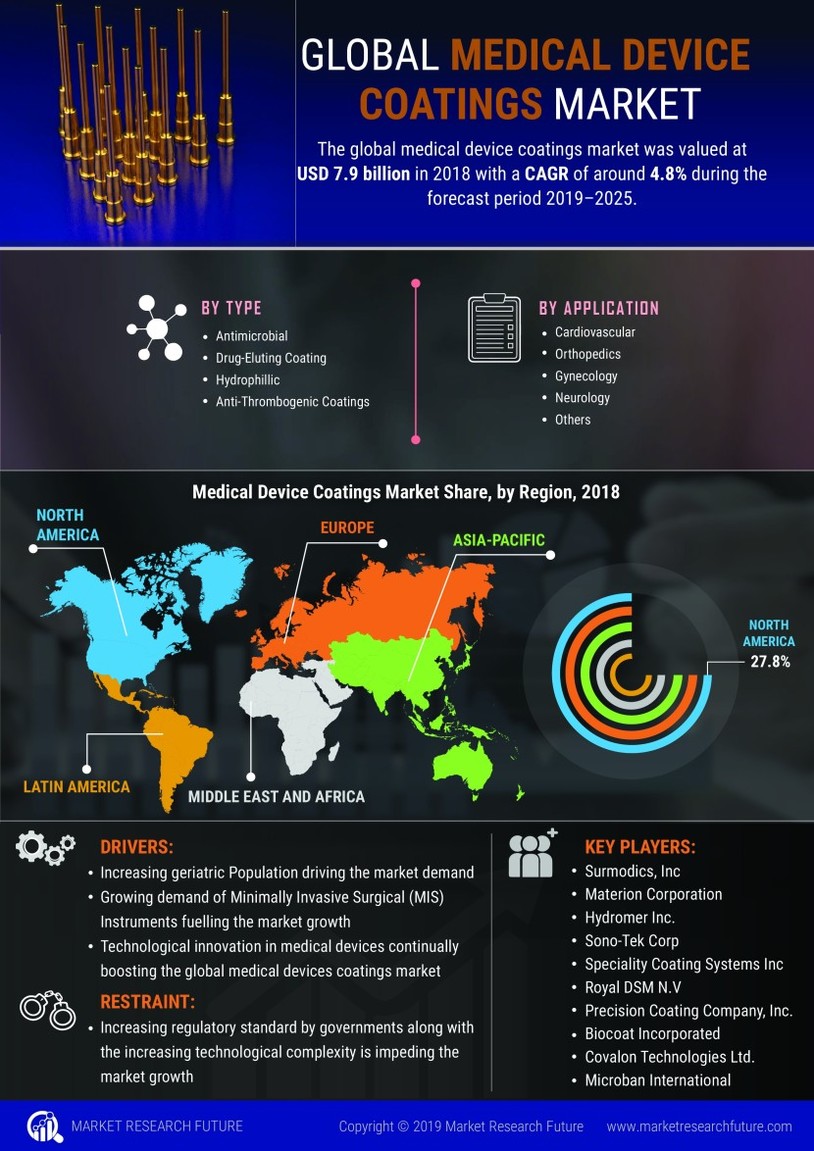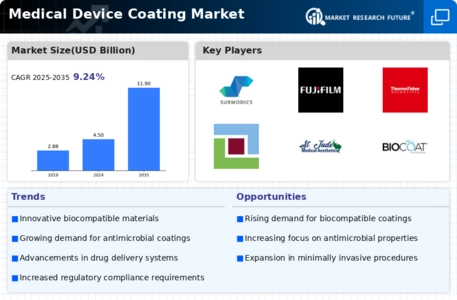Focus on Patient-Centric Solutions
The shift towards patient-centric healthcare solutions is emerging as a pivotal driver in the Medical Device Coating Market. Healthcare providers are increasingly prioritizing patient outcomes, which necessitates the development of medical devices that are not only effective but also comfortable and safe for patients. Coatings that enhance the usability and performance of devices, such as those that reduce friction or improve biocompatibility, are becoming essential. This trend is likely to encourage manufacturers to innovate and invest in research and development to create coatings that align with patient needs. As a result, the Medical Device Coating Market may witness a surge in demand for such patient-focused solutions, ultimately enhancing the overall quality of care.
Regulatory Compliance and Safety Standards
The stringent regulatory landscape surrounding medical devices is a critical driver for the Medical Device Coating Market. Regulatory bodies are increasingly emphasizing the need for safety and efficacy in medical devices, which necessitates the use of high-quality coatings that meet these standards. Compliance with regulations such as ISO 13485 and FDA guidelines is essential for manufacturers aiming to market their products. This focus on safety not only enhances consumer trust but also encourages manufacturers to invest in advanced coating technologies that comply with these regulations. As a result, the Medical Device Coating Market is likely to experience growth as companies strive to meet these evolving standards and ensure the safety of their devices.
Growing Aging Population and Chronic Diseases
The demographic shift towards an aging population, coupled with the rising prevalence of chronic diseases, is a significant driver for the Medical Device Coating Market. Older adults often require medical devices for various health conditions, including cardiovascular diseases, diabetes, and orthopedic issues. This demographic trend is expected to increase the demand for coated medical devices that offer enhanced performance and safety. Reports suggest that the global population aged 65 and older is projected to reach 1.5 billion by 2050, which will likely lead to a corresponding rise in the demand for medical devices. Consequently, the Medical Device Coating Market is poised for growth as manufacturers respond to this increasing need.
Rising Demand for Minimally Invasive Procedures
The increasing preference for minimally invasive surgical techniques is a notable driver in the Medical Device Coating Market. These procedures often require specialized coatings that enhance the performance and safety of medical devices. As patients seek quicker recovery times and reduced hospital stays, the demand for coated devices that facilitate such procedures is likely to rise. According to recent estimates, the market for minimally invasive devices is projected to grow at a compound annual growth rate of approximately 8.5% over the next few years. This trend underscores the necessity for advanced coatings that can improve device functionality while ensuring patient safety, thereby propelling the Medical Device Coating Market forward.
Technological Advancements in Coating Materials
Technological innovations in coating materials are significantly influencing the Medical Device Coating Market. The development of advanced polymers and nanocoatings has led to enhanced properties such as improved biocompatibility, durability, and resistance to wear and tear. These advancements not only improve the performance of medical devices but also expand their applications across various medical fields. For instance, the introduction of antimicrobial coatings has become increasingly relevant, as they help reduce the risk of infections associated with medical devices. The market for such innovative coatings is expected to witness substantial growth, with projections indicating a potential increase in market size by over 15% in the coming years, thereby driving the Medical Device Coating Market.

















Leave a Comment